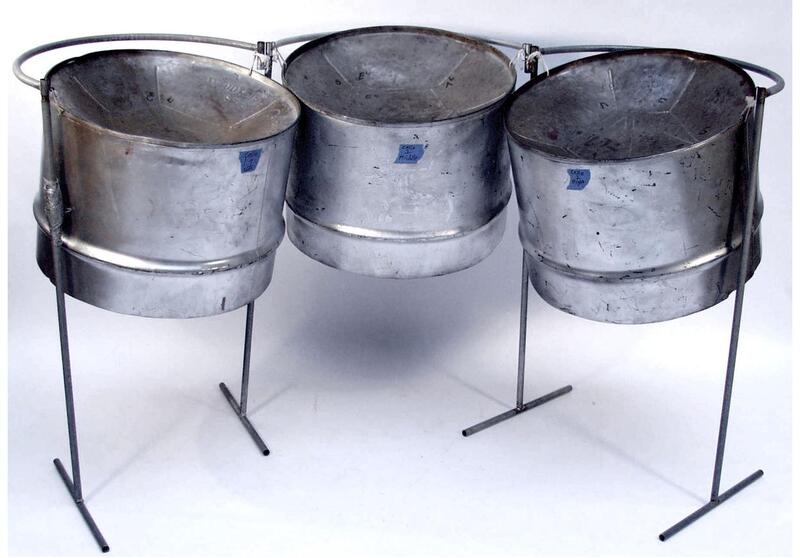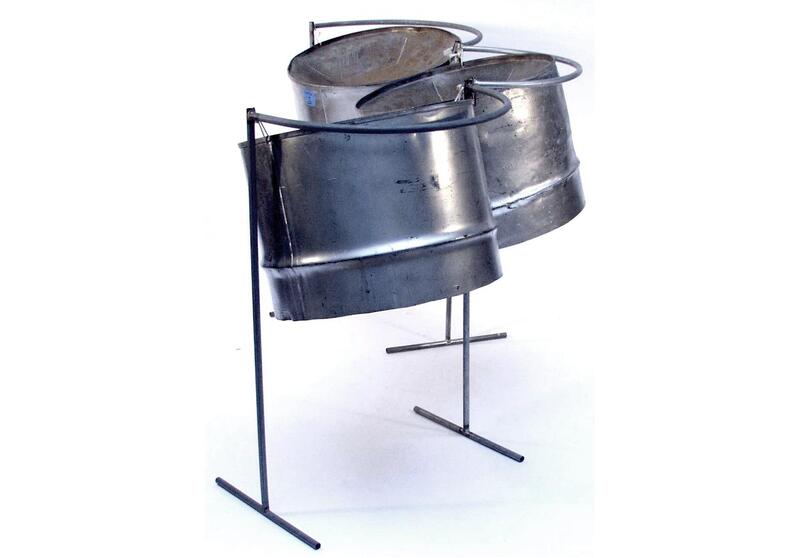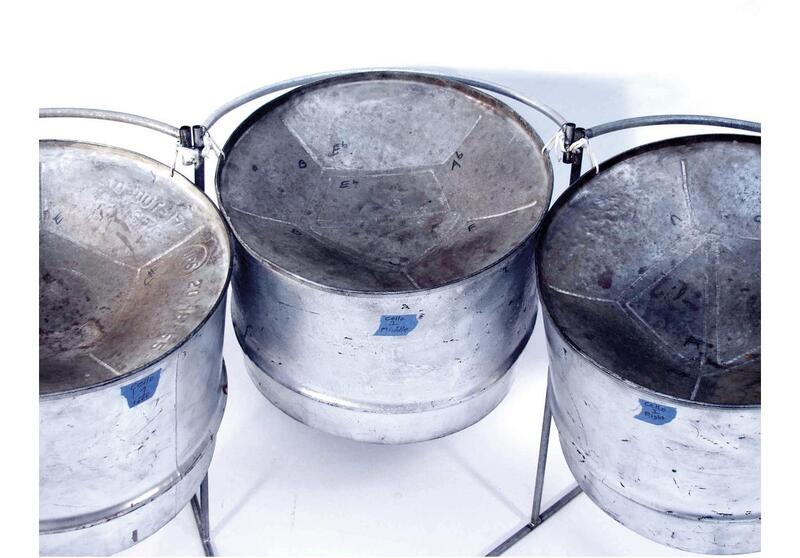Cello Pan
Title
Cello Pan
Video
Physical description
The cello pans consist of either three or four drums with a “skirt” or side length of approx 45 cm (Blake, 114). The lowest notes found along the circumference of the bowl are U-shaped, while the higher octave notes are either oval or circular-shaped inside. The cello pans must be suspended on stands or a rack to allow the drums to resonate and are played with thick rubber mallets. The Wesleyan Collection currently owns the “triple cello” instruments.
Historical background
The cello instruments are utilized mostly as a “strumming” instrument for the lower portions of harmony, as well as countermelody.
Tuning
The triple cello notes have an average of 24 chromatic notes falling between B2 and D5 (Blake, 114). The “four cello” has a range between G2 to C#5.
Geography
Trinidad and Tobago
Classification
111.241.22 Sets of gongs with divided surface sounding different pitches
Ensemble
Steel Pan Ensemble
Materials
Steel
Date/Era
20th century to present
Bibliography
Blake, F.I.R. The Trinidad & Tobago Steel Pan: History and Evolution. Port of Spain, Trinidad: Published by author.
Goddard, George “Sonny.” 1991. Forty Years in the Steelbands, 1939-1979. Port of Spain, Karia Press.
Steumpfle, Stephen. 1995. The Steelband Movement: The Forging of a National Art in Trinidad and Tobago. Philadelphia: Univ. of Pennsylvania Press.
Thomas, Jeffrey Todd. 1985. A History of Pan and the Evolution of the Steel Band in Trinidad and Tobago. M.A. Thesis. Middletown, CT: Wesleyan University.
Additional resources
Pan Trinbago
http://www.pantrinbago.co.tt
http://www.pantrinbago.co.tt
Contributors
Amelia Ingram (2004)
Collection
Citation
“Cello Pan,” Wesleyan University Virtual Instrument Museum 2.0, accessed December 26, 2025, https://wesomeka.wesleyan.edu/vim2/items/show/35.


